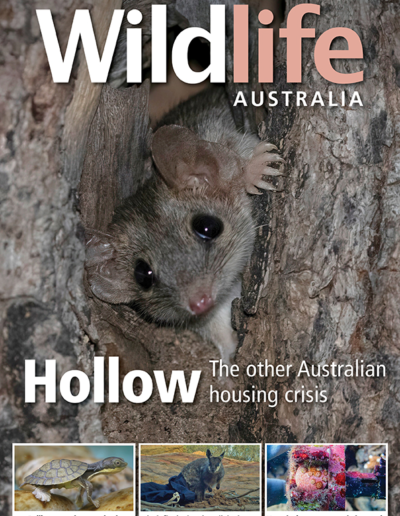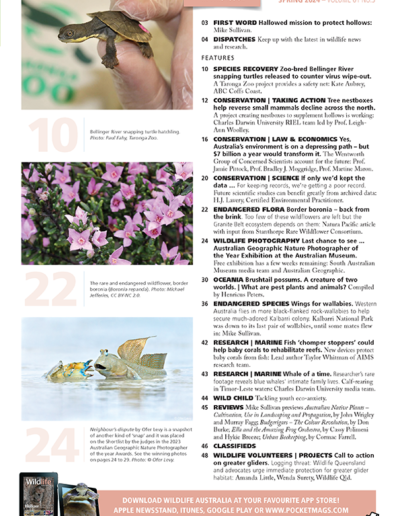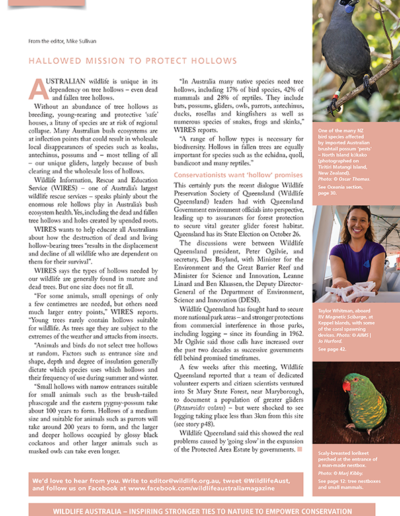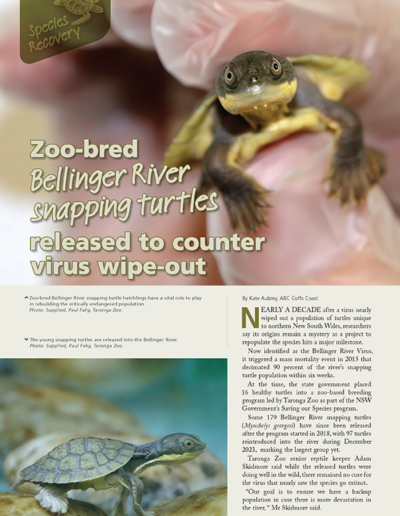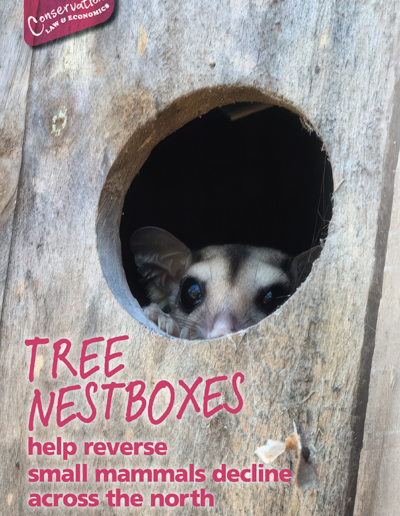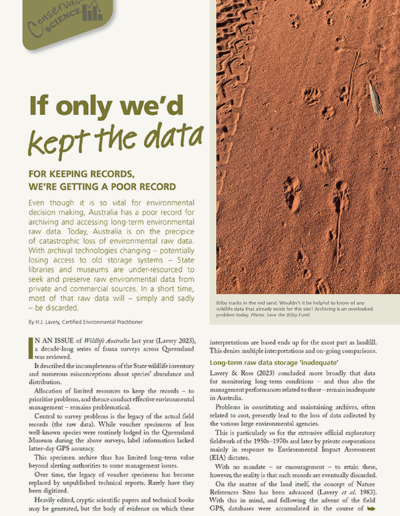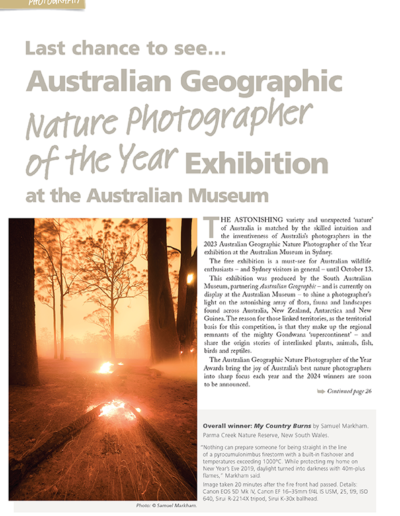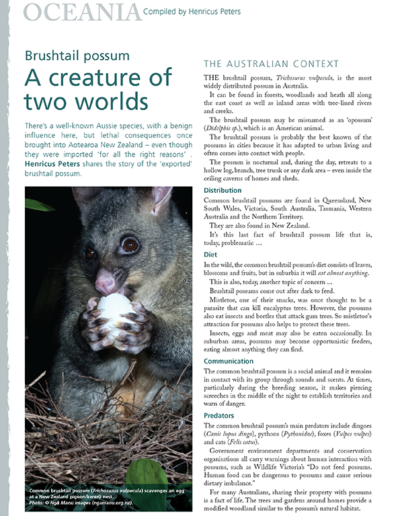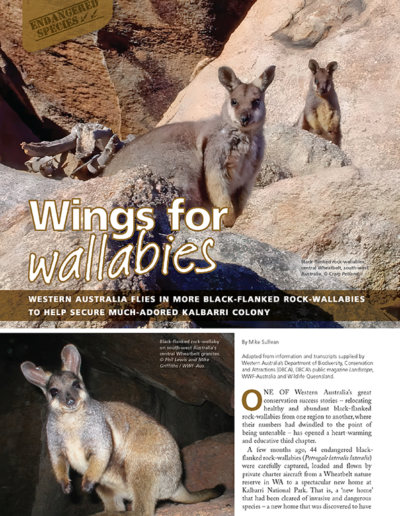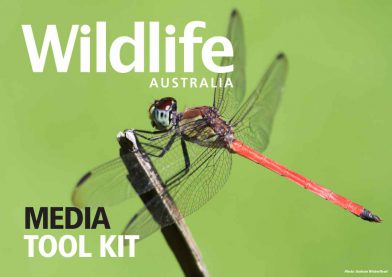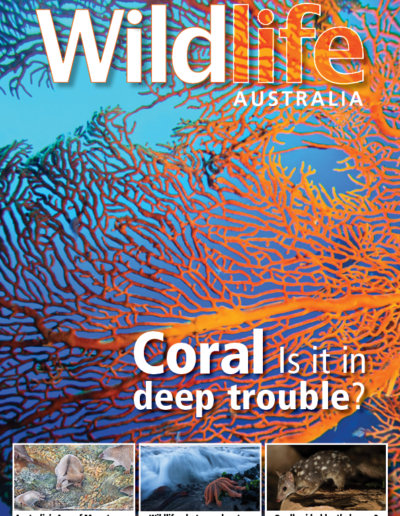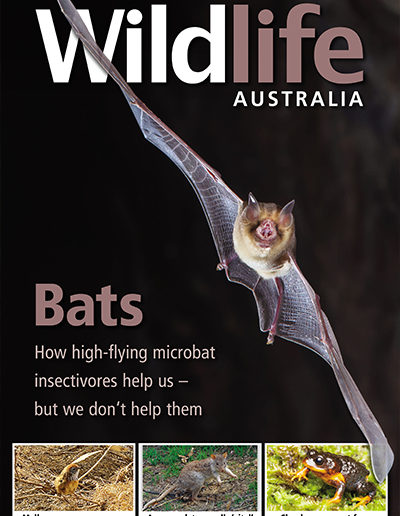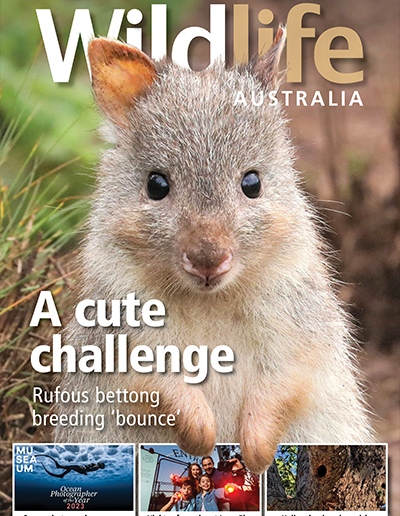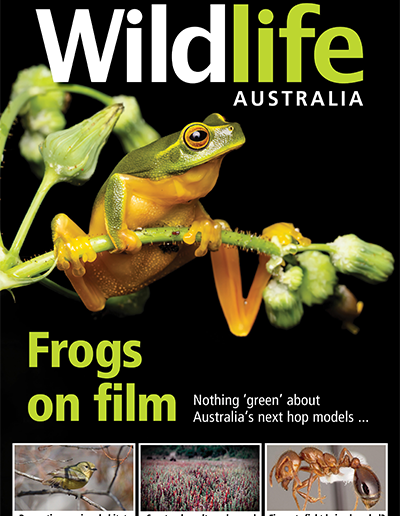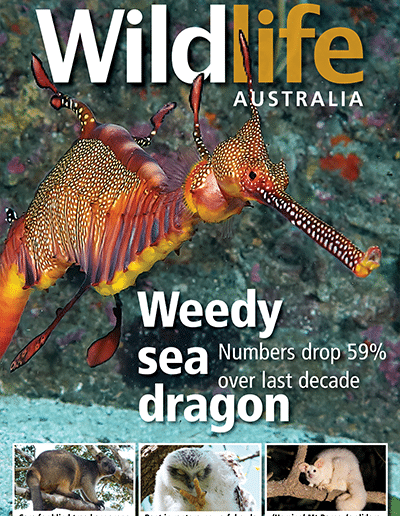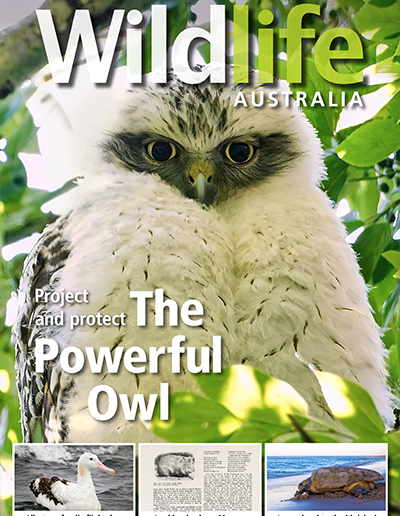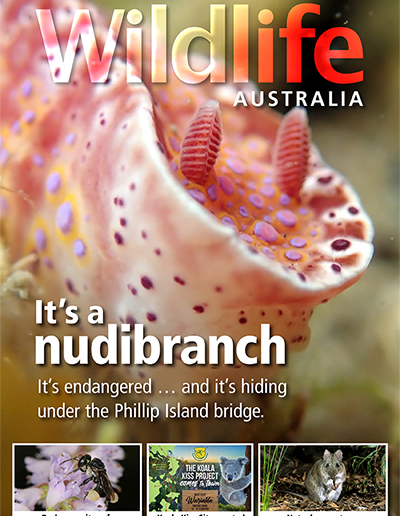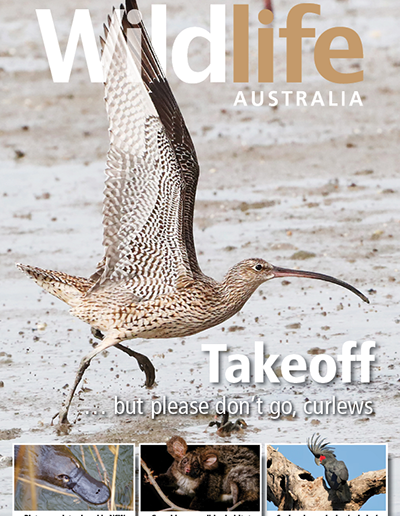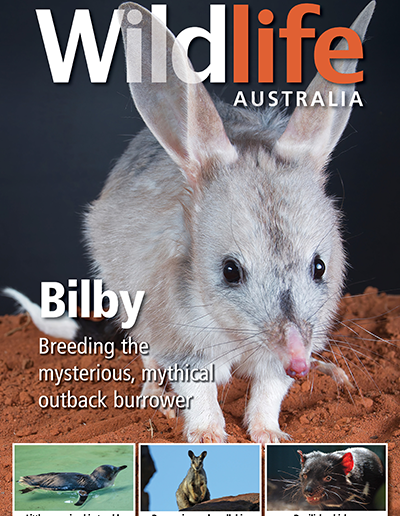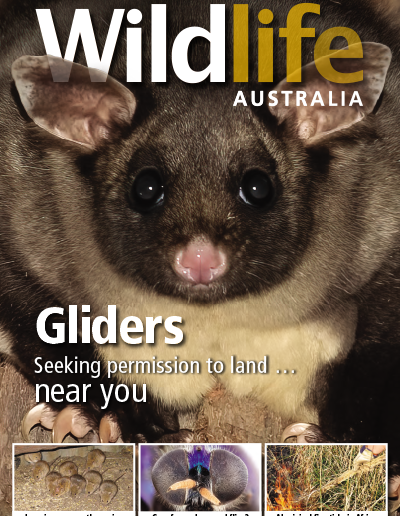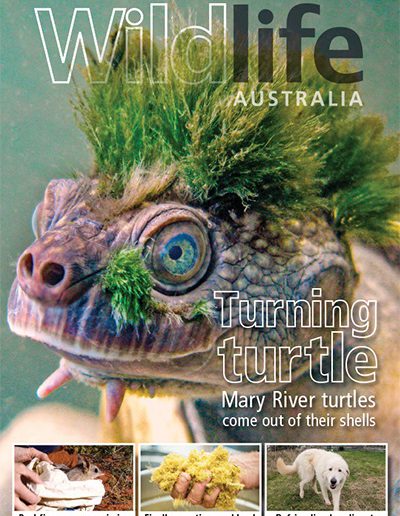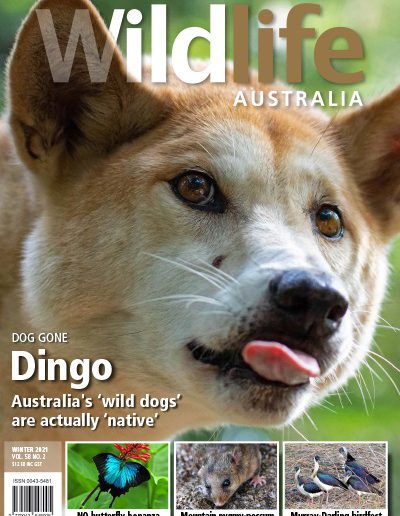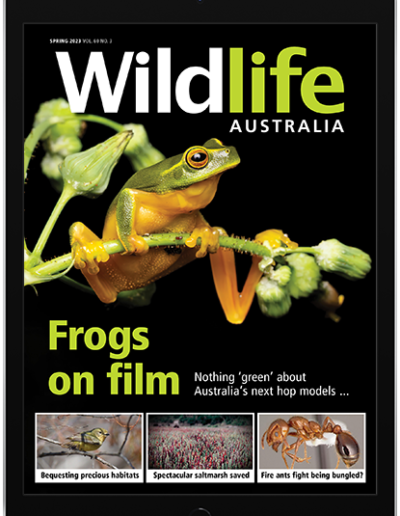Wildlife Australia
Image © Dan Ashdown: Fawn antechinus (Antechinus bellus), peeking out of a natural tree hollow, Kakadu National Park, Northern Territory, Australia.
A subscription to wildlife conservation!
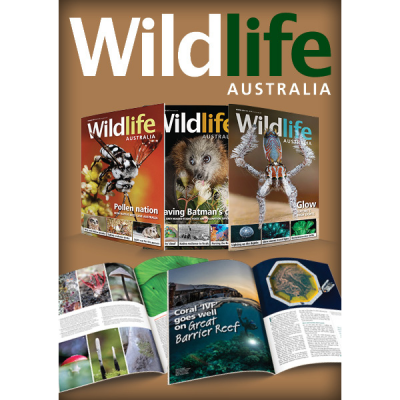
Published by Wildlife Queensland, our quarterly, 48-page full-colour Wildlife Australia magazine features articles by experts, researchers and award-winning natural history authors and showcases the photography of some of Australia’s most talented photographers.
Inside each issue you’ll find:
- Inspiring articles, written by leading experts in conservation
- The latest breakthroughs and discoveries from our network of researchers
- Stunning images from celebrated wildlife photographers
- Insights into conservation projects straight from the field
- Challenging debates on nature and conservation’s hottest topics
- Spotlights on the threatened species and habitats we simply can’t afford to lose
Available in print and digital formats. All proceeds from Wildlife Australia support Wildlife Queensland’s crucial conservation projects.
Preview Wildlife Australia Spring 2024
A look inside: Wildlife Australia Spring 2024 edition
Hallowed mission to protect hollows
Australian wildlife is unique in its dependency on tree hollows — even dead and fallen tree hollows.
This edition looks at the need to protect old-growth bushland, with its abundance of hollows, versus the ease with which that thriving forest can be flattened.
Some ecosystems are at inflection points that could result in local disappearances of koalas, antechinus, possums and — most telling of all — our unique gliders, largely because of bush clearing and the wholesale loss of hollows.
Wildlife Information, Rescue and Education Service (WIRES) speaks plainly about the role hollows play in Australia’s bush ecosystem health.
“Small hollows with narrow entrances suitable for small animals such as the brush-tailed phascogale and the eastern pygmy-possum take about 100 years to form,” WIRES reports. “Hollows of a medium size and suitable for animals such as parrots will take around 200 years to form.
“In Australia, many native species need tree hollows, including 17% of bird species, 42% of mammals and 28% of reptiles. They include bats, possums, gliders, owls, parrots, antechinus, ducks, rosellas and kingfishers as well as numerous species of snakes, frogs and skinks.”
This puts the recent dialogue Wildlife Queensland leaders had with Queensland Government environment officials into perspective, leading up to government assurances to secure vital greater glider forest habitat.
A few weeks after this meeting, a Wildlife Queensland team of experts and citizen scientists ventured into St Mary State Forest, near Maryborough, to document a population of greater gliders (Petauroides volans) — but were shocked to see logging taking place less than 3km from this site.
This edition features a range of stories that state and re-state the importance of protecting bushland in which hollows are a feature. Hollows could rightfully be named as one of Australia’s greatest natural resources.
Wildlife Australia is dedicated to ensuring we offer our advertisers unique advertising options that are relevant to our readership. This ensures Wildlife Australia is enjoyable for our customers and provides an effective marketing platform for our partners.
Why advertise with Wildlife Australia?
As a print and digital wildlife magazine with its own mobile app and web page, Wildlife Australia provides a unique opportunity for businesses to reach nature lovers and conservationists through a variety of channels.
We reach a national network of close to 10,000 environmentally aware people. This includes:
- print and digital subscribers
- university, school and library subscribers
- social media and Wildlife Queensland member contacts.
Advertising rates
For more information about Wildlife Australia advertising rates and specs, please download our Media Tool Kit.
For further advertising enquiries, please email advertising@wildlife.org.au.
Want to write for Wildlife Australia? Well, you’re in good company. Many leading scientists and award-winning authors have contributed over the magazine’s almost six decades of quality natural history publishing.
Benefits of writing for Wildlife Australia
- Promote your work to peers, conservationists, naturalists, citizen scientists and everyday enthusiasts from around the globe.
- Hone your popular writing skills with the help of a friendly, professional editor.
- Authors receive a PDF of the finished article and a complimentary print copy of the issue.
Articles
Most articles are written by experts or professionals and are provided pro bono, as the publisher is not-for-profit, but all nature lovers are invited to pitch an article by submitting a brief proposal to the editor.
Submission guidelines:
- The editor will provide a clear brief and a 4–8 week schedule for the final draft copy.
- Article submissions should be between 1,000 to 2,000 words in length. A short biography of the writer is requested. Preferred formatting is Microsoft Word or any text-only format.
- Use a first-person narrative style for feature articles.
- Use sensory storytelling (plenty of description of sights, sounds and smells) to engage readers and give them an idea of what it’s like out there in the field.
- Articles should excite readers about science and wildlife, raise important conservation topics, and reassure subscribers that writers like you — and not-for-profits like us — are focused on protecting the continent’s biodiversity.
Copyright:
All authors retain shared copyright. This means you can later submit your article to other publications, whether online or in print, or upload it to your own website or online portfolio.
Wildlife Australia retains joint copyright of articles and sometimes shares content with conservation or advertising partners for free, purely for promotional purposes. Wildlife Australia does not receive any payment for content sharing and is committed to protecting the privacy and rights of its contributors.
Book reviews and excerpts
Please contact us about the possibility of including a book review or excerpt of your work.
Product reviews
- If you have a product you would like positively reviewed, please pitch it to the editor at editor@wildlife.org.au.
- We prefer eco-friendly products with a value of $15 or more, although we also review smaller/inexpensive items on occasion.
We remain grateful to all of our Wildlife Australia contributors for enabling us to continue making a difference.

